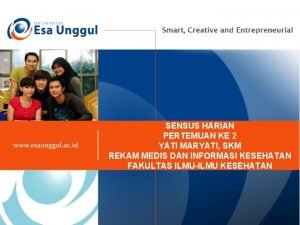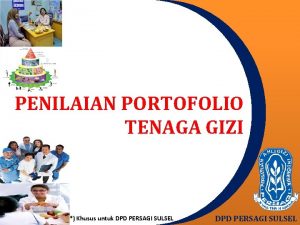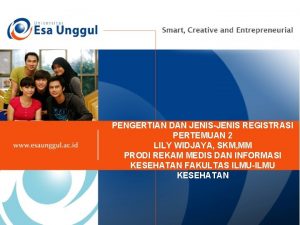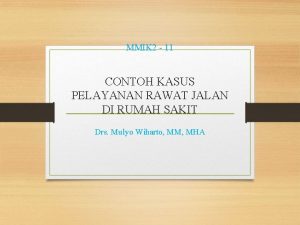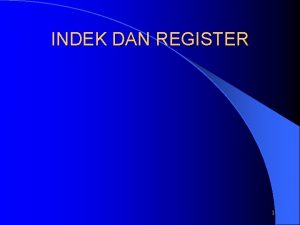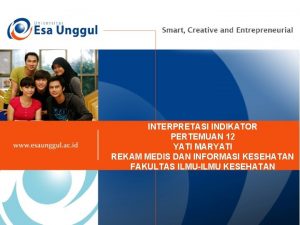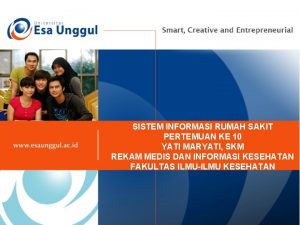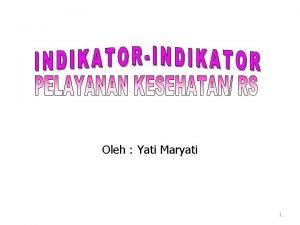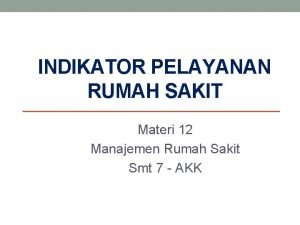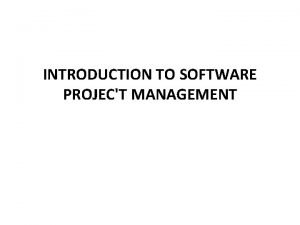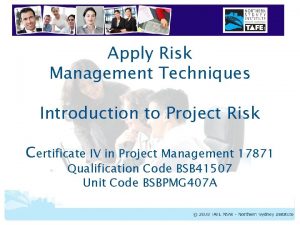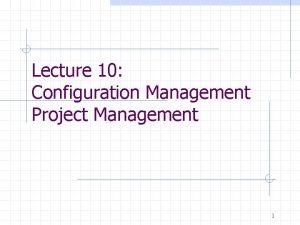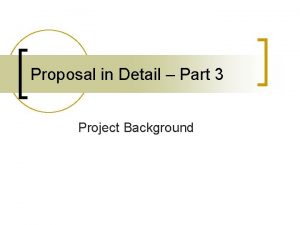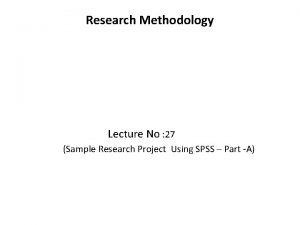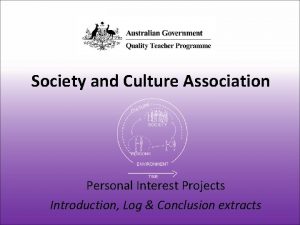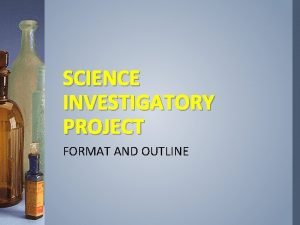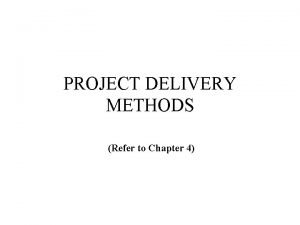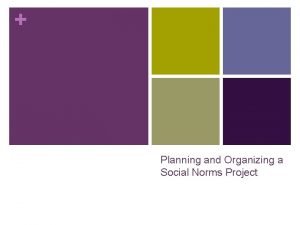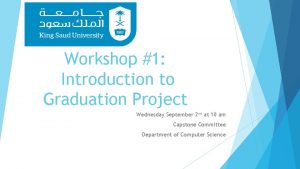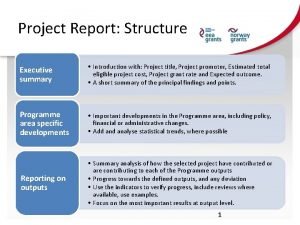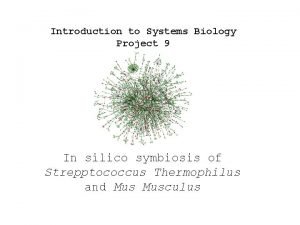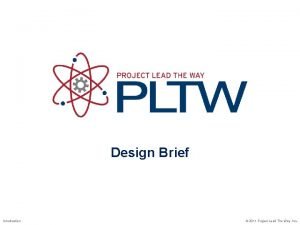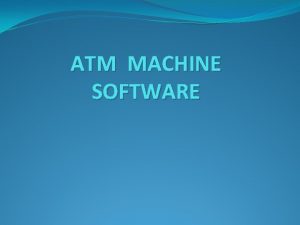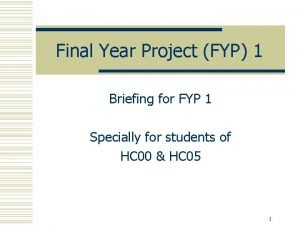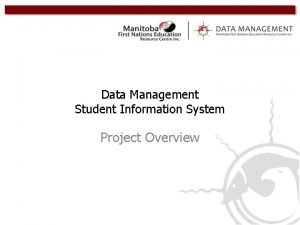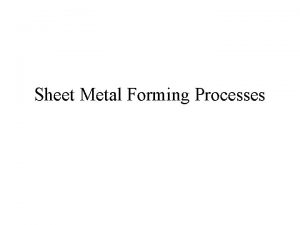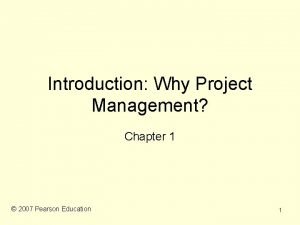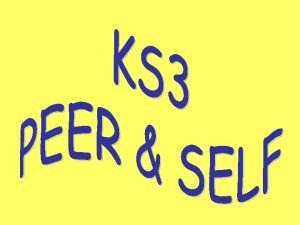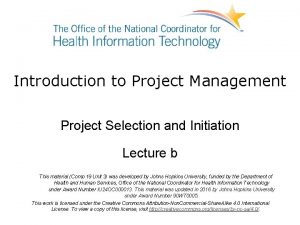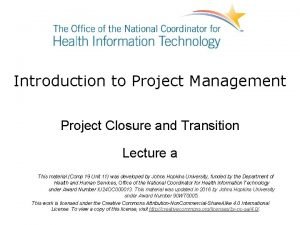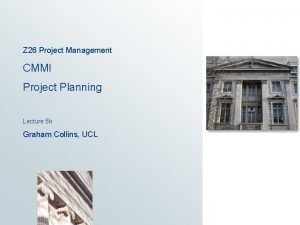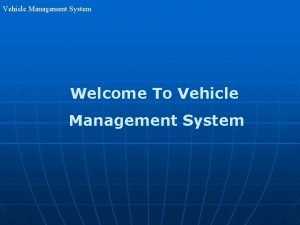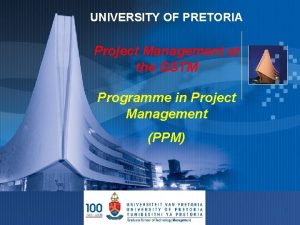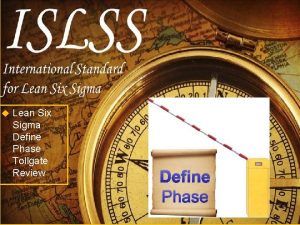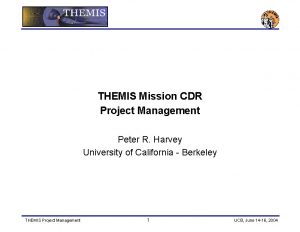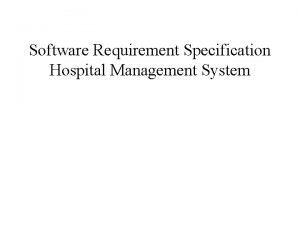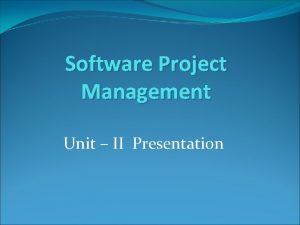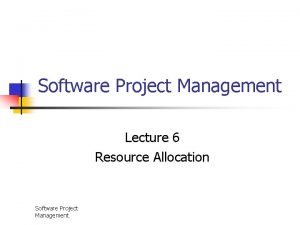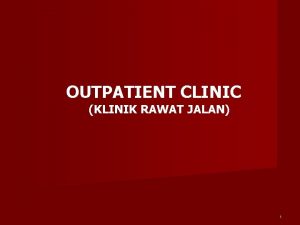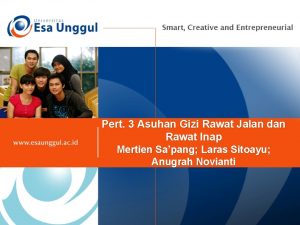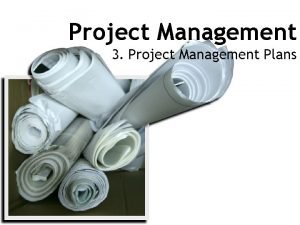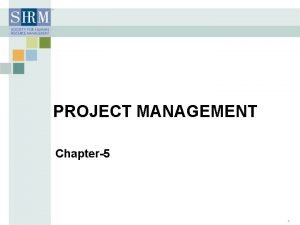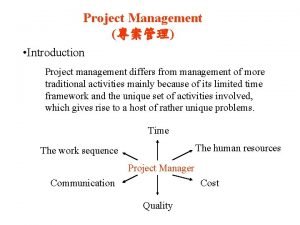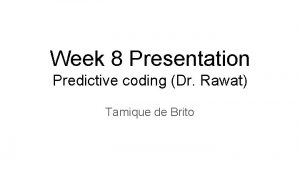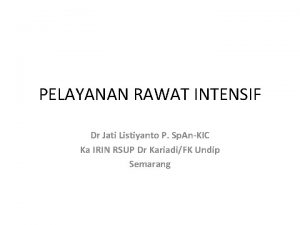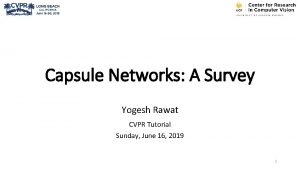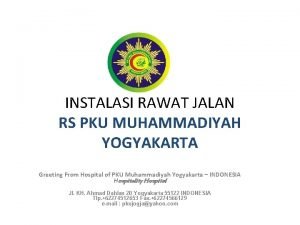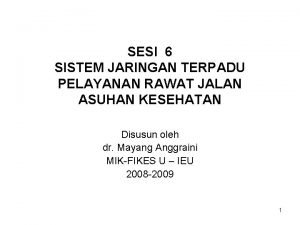Project Management Prof S K Rawat 1 Introduction
































































- Slides: 64

Project Management Prof. S. K. Rawat 1

Introduction to Project Management n n n Modern project management began with the Manhattan Project, which the U. S. military led to develop the atomic bomb In 1917 Henry Gantt developed the Gantt chart as a tool for scheduling work in job shops In 1958, US Navy developed PERT charts In the 1970 s, the military began using project management software, as did the construction industry By the 1990 s, virtually every industry was using some form of project management Prof. S. K. Rawat 2

What Is a Project? n A project is a temporary endeavor undertaken to accomplish a unique purpose n Attributes of projects ¡ Unique definable purpose. ¡ Temporary, one time activity, never to be exactly repeated. ¡ Require resources, often from various areas. ¡ Teams are formed for a purpose and disbanded after achieving the purpose. Prof. S. K. Rawat 3

Attributes of Project ¡ Projects cut across the organizational lines; many disciplines are involved. ¡ Should have a primary sponsor and/or customer / stake holder/s ¡ Involve uncertainty and unfamiliarity, does not fall under the “routine” category of activity ¡ Project is the process of working to achieve a predefined goal and during the process, the project may pass through various phases Prof. S. K. Rawat 4

EXAMPLES n Pyramid of Egypt (2500 B. C. 2. 3 Mn. Stone blocks weighing 2 to 70 tons each, quarried and carried over the Niles, height equivalent of 40 storey building, 13 acres of land, stones fixed with accuracy of. 04 inch!!) n 100, 000 laborers, 40, 000 skilled masons, over 150, 000 women & children to be housed & fed! Prof. S. K. Rawat 5

EXAMPLES n Numerous other examples like Taj Mahal, Eiffel tower, international space station by NASA, anti missile system developed by India, etc. n Advantix advanced photo system created by Kodak in one of their most ambitious projects ever n From construction, information technology to research, projects could be conceived in all possible fields. n Each project is unique in many ways. Prof. S. K. Rawat 6

The Triple Constraint n n Every project is constrained in different ways by its ¡ Scope goals: Quantity & Quality ¡ Time goals ¡ Cost goals It is the project manager’s duty to balance these three often competing goals Prof. S. K. Rawat 7

The Triple Constraint of Project Management Successful project management means meeting all three goals (scope, time and cost) – and satisfying the project’s sponsor! Prof. S. K. Rawat 8

What is Project Management? Project management is “the application of knowledge, skills, tools, and techniques to project activities in order to meet or exceed stakeholder needs and expectations from a project” (PMI)* *The Project Management Institute (PMI) is an international professional society. Their web site is www. pmi. org. Prof. S. K. Rawat 9

CHARACTERISTICS OF PROJECTS n Project has a definite start and finish (Time goals and Scope goals –quantity and quality and). n Project consists of a well-defined and unique collection of jobs, activities, or tasks which when complete; mark the end of project. n Project is constrained by cost, time & resources and has specified performance requirements. n The jobs may be started or stopped independent of each other, within a overall given sequence. Prof. S. K. Rawat 10

Project Stakeholders n n Stakeholders are the people involved in or affected by project activities Stakeholders include ¡ ¡ ¡ ¡ The project sponsor or promoter, project team, equity / share holders support staff Customers / users Suppliers / Vendors / Sub-contractors Financial Institutions / lenders / bankers Govt. / Approving authorities Affected population / opponents to the project Prof. S. K. Rawat 11

Project Management Framework T T Prof. S. K. Rawat 12

Project Management Tools and Techniques n n Project management tools and techniques assist project managers and their teams in various aspects of project management Some specific ones include ¡ Project Charter and Work Breakdown Structure - WBS (scope) ¡ Gantt charts, PERT charts, critical path analysis (time) ¡ Cost estimates and Earned Value Analysis (cost) Prof. S. K. Rawat 13

Advantages of Project Management n n n Bosses, customers, and other stakeholders do not like surprises. Good project management (PM) provides assurance and reduces risk. PM provides the tools and environment to plan, monitor, track, and manage schedules, resources, costs, and quality. PM provides a history or metrics base for future planning as well as good documentation. Project members learn and grow by working in a cross-functional team environment Prof. S. K. Rawat 14

PROJECTS ARE SHAPED BY THEIR ENVIRONMENT q Time q Technology q Cultural System q Social System q Political System q Regulatory & Legal System q Economic System q Organisational System Prof. S. K. Rawat 15

IMPACT OF ENVIRONMENT (CONTD. ) Resources, Budgets. Methods & Tools of Project Management. Depend on above factors & change accordingly. Prof. S. K. Rawat 16

PROJECT EFFORTS STAGES OF A PROJECT AUTHORIZATION Concept Development & Definition Evaluation PROPOSAL SANCTION Scope HAND OVER Organization Detail Engineering & Design Procurement Manufacturing & Construction Trails & Commissioning PLANNING IMPLEMENTATION Schedule Budget Resources Prof. S. K. Rawat Documentation Failure Analysis Learning Operation & Maintenance CLOSING 17

PROJECT MANAGER q His responsibility is to plan, organize, direct and integrate work efforts of all participants to achieve the set project goals (costs, time schedules and scope goals). q One person in the organization who is accountable for the project and is totally dedicated to achieving its goals. q Leadership qualities are essential. Prof. S. K. Rawat 18

DUTIES OF A PROJECT MANAGER q AS A RESOURCE MANAGER: Manage and direct project resources to achieve the project objectives. q AS A PLANNING & CONTROL MANAGER: Develop the project plan and ensure that the work is completed on time, within given budget and with acceptable quality. q AS A CO-ORDINATOR: Interface with higher management regarding project review, issues & approvals. Must also relate to line managers and staff. Prof. S. K. Rawat 19

What does a project manager do? q q q q q Directing Motivating Planning Supervising Administering Doing : : : Training Counselling : : Delegating Resolving Conflict : : Prof. S. K. Rawat Project Resources Project Team Anticipate and plan The Project Work Administrative Tasks Doing some tasks directly Project Team Technical, Business, Project & Personal issues Delegate & supervise Over resources and schedules 20

PROJECT TEAM q q q Project work is team work. Project work is accomplished by a group of people from different functional areas and organizations. Size and composition of the team will vary depending on the project requirements. The team may be disbanded after the project work is completed. Prof. S. K. Rawat 21

PROJECT MANAGEMENT PROJECT PLANNING INVESTMENT DECISION IDEA GENERATION FEASIBILITY & APPRAISAL • Market • Technical • Financial • Economic • Ecological PROJECT CLOSURE PROJECT IMPLEMENTATION SCOPE DEFINITION PROJECT ENVIRONMENT RISK ASSESSMENT • Sensitivity • Scenario • Simulation • Decision tree PROJECT SCHEDULING GANTT CHARTS • Specifications • Deliverables • Time frame • Organization • Budgets • WBS / CBS Prof. S. K. Rawat PROJECT BUDGETING NETWORK TECHNIQUES • PERT • CPM • CRITICAL CHAIN • Activity based costing • Cost breakdown • Cash flow • Earned value 22

Network Techniques q q q Any project is a set of activities and those activities need to be performed in a particular sequence. Most activities will have dependence on some other activity. Example: We cannot start construction of roof until pillars and walls are builded. Similarly, painting of the building cannot be started unless all masonry work has been completed. A network diagram establishes this inter-relationship and dependencies between activities. Prof. S. K. Rawat 23

Network Technique q PERT (Programme Evaluation and Review Technique) and CPM (Critical Path Method) are the methods used to draw the network diagrams. q These two methods are quite similar like twins with some minor differences. q For long they have been referred to in the same breadth. Therefore, they have been merged and called Network Diagram Technique. Prof. S. K. Rawat 24

CPM q CPM approach is applied to more routine nature work situations and therefore, considerable amount of past data is available for similar activities. q The activity durations can be estimated with a fair accuracy. q The total time for completion based on critical path duration is also quite accurate and helps in controlling the project schedules more effectively. Prof. S. K. Rawat 25

CPM q q How do you know that the schedule worked out for 30 days is the best possible and most economical schedule? How much extra cost will be required for reducing this schedule by 5 days? Will that be beneficial for overall project implementation? These are some of the most common questions that every project manager is required to answer satisfactorily. CPM (Critical Path Method) helps the manager to answer these questions. Prof. S. K. Rawat 26

CPM q q Let us consider an example to understand Critical Path Method (CPM). Find out the total time for project completion, critical path and total float available on non critical activities. Activity Duration (D) Immediate Predecessor A B C D E F G H K L 3 5 7 4 6 4 5 8 2 4 -- A A B C C D, E G, F G H, K Prof. S. K. Rawat 27

CPM Activity A B C D E F G H K L 3 5 7 4 6 4 5 8 2 4 -- A A B C C D, E G, F G H, K B, C D E, F G G H H, K L L -- Duration (D) Immediate Predecessor Successor 1 A 3 2 B 5 C 7 D 4 3 5 E 4 G 5 6 X 6 F 4 Prof. S. K. Rawat 0 K 2 8 L 4 9 H 8 7 28

CPM 0 1 8 3 A 3 B 5 C 7 2 1216 /16 D 4 3 E 10 4 G 5 5 6 F 4 2329 /29 21 1421 /21 6 X K 2 8 33 L 4 9 H 8 0 7 A B C D E F G H K L Duration(D) 3 5 7 4 6 4 5 8 2 4 3 8 10 12 16 14 21 29 23 33 Forward Pass Activity EST EFT (EST + D) Prof. S. K. Rawat 29

CPM 0 1 12 3 A 3 B 5 C 7 2 16 D 4 3 E 10 4 27 G 5 5 X 21 6 F 4 6 33 29 K 2 8 L 4 9 H 8 0 7 A B C D E F G H K L Duration(D) 3 5 7 4 6 4 5 8 2 4 3 12 10 16 16 21 21 29 29 33 Backward Pass Activity LST LFT Prof. S. K. Rawat 30

CPM 0 1 8 3 A B 5 C 7 2 3 16 D 4 3 G 5 5 E 10 21 21 6 X 0 33 29 K L 4 8 2 9 H 8 Activity A B C 6 F 4 D Duration(D) 3 5 7 4 6 4 5 8 2 4 EST 0 3 3 8 10 10 16 21 21 29 EFT 3 8 10 12 16 14 21 29 23 33 LST 0 7 3 12 10 17 16 21 27 29 LFT Total Float 3 0 12 4 10 0 16 4 16 0 21 7 21 0 29 6 33 0 4 F Pass B Pass Critical Path 7 E F G H K L A-C-E-G-X(Dummy)-H-L (Duration = 33 Week) Prof. S. K. Rawat 31

PERT q q PERT model is an event oriented network that recognises the specific ‘stages’ of completion or ‘milestones’ in the project. The events are the end results of an activity. The interdependence of the events is well defined. It introduces a lot of uncertainty about the time estimates and efforts required to complete the activity. For example some projects, like R&D projects, there is no past data to base the time estimates. Sometimes, external factors have a strong influence on the project and therefore, the time required to complete the project is not precisely known. Prof. S. K. Rawat 32

PERT q q PERT method is used to estimate time in the following manner: Optimistic time (O): It is the minimum possible time that an activity can take to complete, considering that activity does not encounter any problems. Most likely time (M): It is the best estimate of the time required to complete an activity, assuming that the activity faces moderate delay as normally expected. Pessimistic time (P): It is the maximum possible time the activity could take to finish, assuming that the activity faces maximum possible problems and delays. Prof. S. K. Rawat 33

PERT q q Expected time (TE): It is the best estimate of the time required to complete an activity, assuming everything proceeds as normal. The implication being that the expected time is the average time an activity would require, if the activity were repeated on a number of occasions over an extended period of time. Thus the expected time is given as The probability of the project completing within the total schedule time calculated on the basis of three estimates is 50%. Prof. S. K. Rawat 34

PERT q Using the formula, the average time for various activities is calculated. q Network is drawn based on relationships given. q Critical path is identified as the longest path in the network out of various paths available. q Find standard deviation for critical activities. i. e. q Find variance for critical activities. i. e. q Find standard deviation of critical path duration = Prof. S. K. Rawat 35

PERT q Let us consider an example to understand PERT method. q Draw the project network and identify all paths through it. Find expected duration and variance for each activity. What is expected duration of project with 50% chance of completion? Find standard deviation. q q q A B C D E F G Predecessor -- -- -- A B C D, E O 1 1 2 2 3 M 1 4 2 1 5 5 6 P 7 7 8 1 14 8 15 Duration Activity Prof. S. K. Rawat 36

PERT q Let’s find out estimated expected time(TE) for each activity by A B C D E F G Predecessor -- -- -- A B C D, E O 1 1 2 2 3 M 1 4 2 1 5 5 6 P 7 7 8 1 14 8 15 TE 2 44 3 1 6 5 77 Duration Activity Prof. S. K. Rawat 37

PERT Now draw network diagram using expected time for various activities. Activity Predecessor A -- Duration (TE) 2 4 C -- 3 D A 1 E B 1 3 6 F C 5 G D, E 7 2 C G -- 7 B A 2 5 D 1 E 6 q B 4 3 4 6 F 5 38 Prof. S. K. Rawat

PERT Now let us find critical path by calculation of duration for different paths Path Duration B-E-G 17 C-F A 1 3 8 C 2 G 10 B 4 7 A-D-G 2 5 D 1 E 6 q 3 4 F 5 6 Critical Path is B-E-G as duration is maximum (17) at this path. 39 Prof. S. K. Rawat

PERT q Let’s find Standard deviation & variance for critical path Duration Activity Predecessor Std Deviation Variance O O M M P P TE TE б б б 2 AA -- -- 1 1 7 7 2 2 1 1 -- BB -- -- 1 1 4 4 7 7 4 4 1 1 1 CC -- -- 2 2 8 8 3 3 1 1 -- DD A A 1 1 1 1 0 0 -- EE B B 2 2 5 5 14 14 6 6 2 2 4 FF C C 2 2 5 5 8 5 5 1 1 -- 3 3 6 6 15 15 7 7 2 2 4 GG D, E 8 Standard Deviation of Critical Path= √ 9 = 3 weeks Prof. S. K. Rawat Total 9 40

CONCEPT OF BREAK EVEN ANALYSIS q Break-event analysis involves the study of revenues and cost of a firm in relation to its volume of sales. q It specifically determines the volume at which the firm’s costs and revenues will be equal. q The break-event point (BEP) may be defined as the level of sales at which total revenues equal total costs and the net income is equal to zero. q BEP is also known as no-profit no-loss point. Prof. S. K. Rawat 41

CONCEPT OF BREAK EVEN ANALYSIS q It may be determined either in terms of physical units or money (i. e. , sales value in rupees). q The main objective of the break-even analysis is not simply to spot the BEP, but to develop an understanding of the relationship of cost, price and volume within a company’s practical range of operations. q The break-even chart is an “excellent instrument panel for guidance in controlling your business. ” Prof. S. K. Rawat 42

CONCEPT OF BREAK EVEN ANALYSIS q BEP may be determined either in terms of physical units or money (i. e. , sales value in rupees). q The main objective of the break-even analysis is not simply to spot the BEP, but to develop an understanding of the relationship of cost, price and volume within a company’s practical range of operations. q The break-even chart is an “excellent instrument panel for your guidance in controlling your business. ” Prof. S. K. Rawat 43

BEP for Physical Units q q q This method is for the single-product firm. The break-even volume is the number of units of product that has to be sold in order to cover all expenses-both fixed and variable. The selling price of a unit covers not only variable cost but also leaves a margin (contribution margin). This margin is contributed toward the fixed costs. The break-even point is reached when sufficient numbers of units have been sold so that the total contribution margin of the units sold is equal to the fixed costs. Prof. S. K. Rawat 44

BEP for Physical Units q The formula for calculating the break-even point is: Cost & Revenues (in rupees) where Contribution Margin per unit = Sales (Selling Price) – Variable Cost Y Total Cost R O Prof. S. K. Rawat BEP Total Revenue Fixed Cost Q Production (in physical units) X 45

Example on BEP (Units) q q q This method is for the single-product firm. The break-even volume is the number of units of product that has to be sold in order to cover all expenses-both fixed and variable. The selling price of a unit covers not only variable cost but also leaves a margin (contribution margin). This margin is contributed toward the fixed costs. The break-even point is reached when sufficient numbers of units have been sold so that the total contribution margin of the units sold is equal to the fixed costs. Prof. S. K. Rawat 46

BEP for Physical Units Example: Fixed costs of a factory are Rs. 10, 000/year, the variable costs are Rs. 2 per unit & the selling price is Rs. 4 per unit. Solution: The break-even point would be: In other words, the company would not make any loss or profit at a sales volume of 5, 000 units as shown below: Sales Rs. 20, 000 Rs. 4 x 5000 = 20, 000 Cost of goods sold Variable cost @ Rs. 2. 00/- Rs. 2 x 5000 = Rs. 10, 000 Fixed cost Rs. 10, 000 Net Profit Prof. S. K. Rawat Rs. 20, 000 NIL 47

BEP for Sales q Multi-product firms are not in a position to measure the BEP in terms of any common unit of product. q They find it convenient to determine their BEP in terms of total rupee sales. q The BEP would be the point where the contribution margin (sales value- variable costs) would equal the fixed costs. q The contribution margin ratio is expressed as a ratio contribution margin/unit to sales. Prof. S. K. Rawat 48

BEP for Sales q The formula for calculating the BEP (Sales) is: Cost & Revenues (in rupees) Total Revenue line Y fit Pro e Zon } } Profit Total Cost line Fixed Cost line Variable Cost line e on Z s s } Lo O Prof. S. K. Rawat BEP Sales Variable Cost X 49

SALES (BEP) Example: Fixed profit for a product if the sales is Rs. 10, 000, variable cost & fixed cost for the product is Rs. 6, 000 & Rs. 3, 000. Solution: Sales Rs. 10, 000 Cost of goods sold Variable cost Fixed cost Rs. 6, 000 Rs. 3, 000 Net Profit Rs. 9, 000 Rs. 1, 000 From the given data the company makes a profit of Rs. 1, 000. Now let us calculate BEP(Sales) & check whethere is profit or loss at BEP(Sales) Prof. S. K. Rawat 50

SALES (BEP) We know that Contribution Margin Ratio is calculated as : The BEP(Sales) would be: Sales(BEP) Rs. 7, 500 Cost of goods sold )= 0. 6] Variable cost@ [(1 - 0. 4 Rs. 0. 6 x 7500 Rs. = 4, 500 4, 000 Fixed cost Rs. 3, 000 Net Profit Rs. 7, 500 NIL Thus at the sales value of Rs. 7, 500 (BEP), there is No-profit No-loss. Prof. S. K. Rawat 51

QUALITY MANAGEMENT Definition of Quality q Quality is defined as customer satisfaction. q According to ISO 9000, “Quality is the total features and characteristics of a product or service that has an ability to satisfy stated or implied needs of customers. ” Concept of Quality: Broadly, quality is: n Fitness for use. n Grade. n Degree of preference. n Degree of excellence. n Conformity of requirement. Prof. S. K. Rawat 52

QUALITY MANAGEMENT Principles of Quality Management (QM) The ten principles of Quality Management is listed below: q Vision based. q Customer focused. q Prevention oriented. q Scientifically approached. q Process given more importance than the end result. q Data based on analysis. q Continuous improvement strategies. q Cost conscious attempt. q Documentation for traceability. q Reward / Recognition assured. Prof. S. K. Rawat 53

QUALITY CIRCLE Characteristics of QC q Small primary groups of employees, size 8 to 10 people. q Membership is voluntary. q Members choose their own leader. q Members meet regularly according to an agreed schedule. q Members are specially trained in problem solving and analysis techniques in order to play their role effectively. q Basic role of QC is to identify and solve work related problems. q It enable members to use their hidden talents, creative skills and competence for tackling problems. q It contributes members self esteem and self confidence. Prof. S. K. Rawat 54

QUALITY ASSURANCE q q q Quality Assurance is what a company claims on the product label. QA is a planned and systematic production processes that provide confidence in a product's suitability for its intended purpose. It is a set of activities intended to ensure that products (goods and/or services) satisfies customer requirements. It regulates the quality of raw materials, assemblies, products and components; services related to production; and management. It is important to realize also that quality is determined by the intended users, clients or customers. Even goods products with low prices can be considered quality items if they meet a market need. Prof. S. K. Rawat 55

TOTAL QUALITY MANAGEMENT q q q Total Quality is a description of the culture, attitude and organization of a company that aims to provide continuous satisfaction of customers need with respect to products and services. Total Quality Management is management strategy aimed at embedding awareness of quality in all organizational processes. TQM has been widely used in manufacturing, education, government, and service industries, as well as NASA space and science programs. Prof. S. K. Rawat 56

TOTAL QUALITY MANAGEMENT Definition q “TQM is a management approach of an organization, centered on quality, based on the participation of all its members and aiming at long-term success through customer satisfaction, and benefits to all members of the organization and to society. ” q Total quality management (TQM) as “management the entire organization so that it excels on all dimensions of products and services that are important to the customer. ” Prof. S. K. Rawat 57

TQM STAGES The various stages that exist in an organization during TQM implementation are shown in the figure below. The In the first third second stage ishas a common all it isarrows noticed situation pointing that there seen towards are in several no the dots same (no one is organizations. relaxing). direction. But It indicates the In this arrows stage, thatare there focused isare a common in few different people goaldirections. who or vision for This constantly means the organization there work is no(arrows), and single every focus while individual forthere the organization. isare focus several on the others Every same who vision. relaxis(dots). achiever This theperforms best Thisofisthe in not his previous aown healthy way. three situation stages. for organizations. III II I Stages Workers Orientation Prof. S. K. Rawat 58

TQM STAGES As this In the stage number all of thepeopleremains are working the same, as a team. it can When be saidpeople that workfourth the as a team, stage synergic indicateseffect a tremendous sets in and increase there isinalways productivity. five timesthe (i. e. , greater inputeffect remaining as compared same, the tooutput peoplehas working increased). as a group. IV III II I Stages Workers Orientation Prof. S. K. Rawat 59

KAIZEN q Kaizen, Japanese for "change for the better" or "improvement", the English translation is "continuous improvement", or "continual improvement" is an approach to productivity improvement. q Kaizen is about effecting small changes continuously. q Employees are encouraged to participate and innovate with process and materials. q The improvements effected by the employees do not get materially rewarded. In Kaizen also, each improvement is reported and placed on the notice board. Prof. S. K. Rawat 60

KAIZEN q q q A closer definition of the Japanese usage of Kaizen is "to take it apart and put back together in a better way. “ What is taken apart is usually a process, system, product, or service. Kaizen is not about radical big bang improvements. It is a daily activity and the changes are so small that they literally do not cost any money. It is quite possible that an improvement effected today may get altered tomorrow itself with a better method. Everyone participates in kaizen; people of all levels in an organization, from the CEO down, as well as external stakeholders when applicable. Prof. S. K. Rawat 61

‘ 5’S q q q The 5 -S practice is a technique used to establish and maintain quality environment in an organization. 5 -S is the key to Total Quality Environment. The 5 -S stands for five Japanese words- Seiri, Seiton, Seiso, Seiketsu, and Shitsuke. The 5 -S technique has been widely practiced by quality organizations world-wide. Most 5 -S practitioners consider 5 -S useful not just for improving their physical environment, but also for improving their thinking processes too. Many of the everyday problems could be solved through adoption of this practice. Prof. S. K. Rawat 62

‘ 5’S q Unfortunately, unlike other quality tools and techniques, this basic but powerful technique for quality improvement has not been known to the western world. q Workplaces in Japan are well-known for their cleanliness and orderliness. This results from the Japanese emphasis on training and discipline. q The logic behind the 5 -S practice is that organization, neatness, cleanliness, standardization and discipline at the workplace are basic requirements for producing high quality products and services, with little or no waste, while maintaining high levels of productivity. Prof. S. K. Rawat 63

‘ 5’S The English equivalents, their meanings and typical examples for ‘ 5’S is shown below: Japanese English Meaning Seiri Structurize Organization Throw away waste Seiton Systemize Neatness 30 -sec retrieval of document Seiso Sanitize Cleaning Individual cleaning responsibility Seiketsu Standardize Standardization Transparency of storage Shitsuke Self-discipline Do 5 -S daily Prof. S. K. Rawat Typical Example 64
 Rumus sensus harian rawat inap
Rumus sensus harian rawat inap Rumus perhitungan tenaga perawat menurut gillies
Rumus perhitungan tenaga perawat menurut gillies Asuhan gizi rawat inap
Asuhan gizi rawat inap Buku registrasi adalah
Buku registrasi adalah Contoh kasus rawat jalan
Contoh kasus rawat jalan Pengertian buku register
Pengertian buku register Sensus harian rawat inap
Sensus harian rawat inap Data dasar rumah sakit
Data dasar rumah sakit Rumus bor rumah sakit
Rumus bor rumah sakit Rumus alos rawat inap
Rumus alos rawat inap Traditional vs modern project management
Traditional vs modern project management The role of project management in achieving project success
The role of project management in achieving project success Iteration workflows in software project management
Iteration workflows in software project management Reducing project duration examples
Reducing project duration examples Introduction to project management kathy schwalbe
Introduction to project management kathy schwalbe Project evaluation in software project management
Project evaluation in software project management Perpetual project closure
Perpetual project closure Ms project agile planning
Ms project agile planning Type n terminations
Type n terminations Software
Software Health club management system
Health club management system Introduction to project risk management
Introduction to project risk management Sujet divisé alloprof
Sujet divisé alloprof Managing assets vs asset management
Managing assets vs asset management Configuration management system pmp
Configuration management system pmp Basic principles of cost management in project management
Basic principles of cost management in project management Example of configuration items
Example of configuration items Focusing on broad organizational needs
Focusing on broad organizational needs Scientific management
Scientific management Top management middle management first line management
Top management middle management first line management Top level management
Top level management Background of project
Background of project Process indicators enable software project manager to
Process indicators enable software project manager to Sample theoretical background
Sample theoretical background Pip conclusion sample
Pip conclusion sample Investigatory research
Investigatory research Project method introduction
Project method introduction Technical decisions in project charter
Technical decisions in project charter Introduction for school project
Introduction for school project Introduction for graduation project
Introduction for graduation project Introduction for project report
Introduction for project report Introduction for biology project
Introduction for biology project Design statement pltw
Design statement pltw Which software is used in atm machine
Which software is used in atm machine Introduction for project file
Introduction for project file Fyp ums
Fyp ums Student information system project
Student information system project Surface area to volume ratio in bulk deformation process
Surface area to volume ratio in bulk deformation process Narrow product launch windows
Narrow product launch windows Introduction of project
Introduction of project Introduction for project
Introduction for project Introduction of a project example
Introduction of a project example Essay structure
Essay structure Cmmi level 3 documentation templates
Cmmi level 3 documentation templates Project procurement management lecture notes
Project procurement management lecture notes Vehicle management system project
Vehicle management system project Ppm university of pretoria
Ppm university of pretoria Describe what we do at a tollgate meeting?
Describe what we do at a tollgate meeting? Pdr cdr project management
Pdr cdr project management Risk event life cycle
Risk event life cycle Effective software project management
Effective software project management Telecom risk management
Telecom risk management Srs of hospital management system
Srs of hospital management system Strategic assessment in spm
Strategic assessment in spm Allocation management software
Allocation management software
